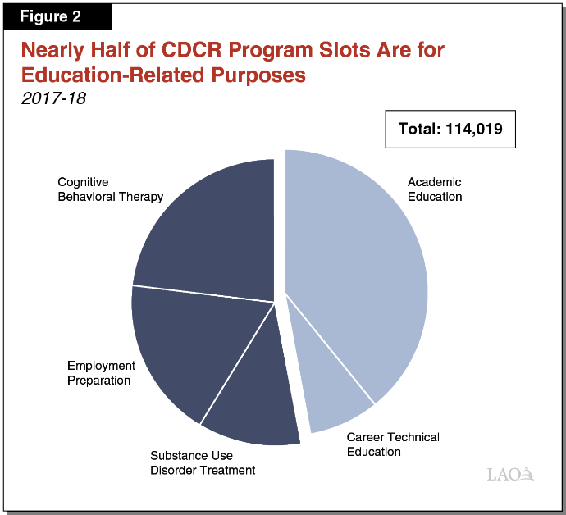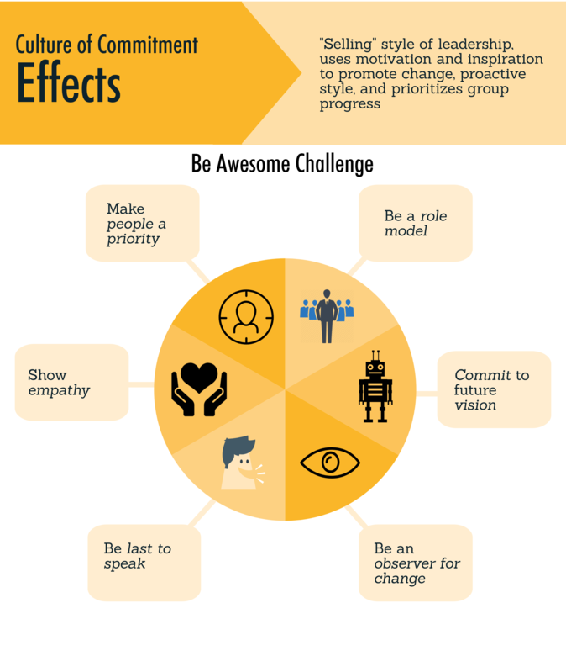9.1: Culturally Responsive Evaluation and Treatment Planning
- Page ID
- 16128
This section offers correctional staff guidance in providing and facilitating culturally responsive interviews, assessments, evaluations, and treatment planning. Correctional professionals: prison guards, correctional counselors, probation officers, parole agents and others involved in the rehabilitation of offenders have a dual role when dealing with offenders. On one hand, they must protect the community/institution and ensure the offender complies with court orders. However, in order to also aid the offender in rehabilitation, they must develop a rapport with the offender. This is often a difficult role to balance; however, it is best to describe this as an authoritative relationship similar to parent/child relationship. Correctional professionals can provide the best treatment services when the offender is receptive to the officer’s guidance. This section provides direction on how officers can develop rapport while maintaining professionalism.

Step 1: Engage Offender
The initial contact with the offender is vital for success. Often times they stand on the far side of a yet-to- be-established therapeutic relationship. At the outset of treatment, offender can feel scared, vulnerable, and uncertain about whether treatment will really help. They may even be ambivalent that you are there to help them and only intend to catch them doing wrong. To engage the offender, the correctional professional should try to establish rapport and set the tone of the interaction. It is important to provide the expectations and requirements of treatment, so they understand what to do and how to act. It is also important to provide possible consequences of non-compliance. Some offenders feel that a single violation will result in incarceration or additional days. So, when they fail, or even a minor misstep occurs, they give up. It’s important to let them know that not all failures will result in custody sanctions.
Step 2: Familiarize Offender and Their Families with Treatment and Evaluation Processes
Behavioral health treatment facilities located in prisons and in the community maintain their own culture (i.e., the treatment milieu). Correctional professionals, counselors, and agency administrators can easily become accustomed to this culture and assume that offenders are used to it as well. However, offenders are typically new to treatment language or jargon, program expectations and schedules, and the intake and treatment process. Unfortunately, offenders from diverse racial and ethnic groups can feel more estranged and disconnected from treatment services when staff members fail to educate them and their families about treatment expectations or when the offenders are not walked through the treatment process, starting with the goals of the initial intake and interview. By taking the time to acclimate offenders and their families to the treatment process, correctional professionals, counselors and other behavioral health staff members tackle one obstacle that could further impede treatment engagement and retention among racially and ethnically diverse offender.
Step 3: Endorse Collaboration in Interviews, Assessments, and Treatment Planning
Most offenders are unfamiliar with the evaluation and treatment planning process and how they can participate in it. Often times they just expect to be told what to do or suffer a sanction if they fail to comply. However correctional professionals are now engaging offenders and making them part of the treatment process. This is often a bit strange for offenders who often resent authority and don’t trust officers. Again, this is why the initial meeting with offenders are vital. Establishing a quasi-parental role that provides structure and support is important. It is also necessary for the offender to provide personal information, so the case plan is accurate. Some offenders may view the initial interview and evaluation as intrusive if too much information is requested or if the content is a source of family dishonor or shame. Other offender may resist or distrust the process based on a long history of racism and oppression. Still others feel inhibited from actively participating because they view the counselor as the authority or sole expert.

Step 4: Integrate Culturally Relevant Information and Themes
By exploring culturally relevant themes, correctional professionals can more fully understand their offender and identify their cultural strengths and challenges. For example, a Korean woman’s family may serve as a source of support and provide a sense of identity. At the same time, however, her family could be ashamed of her and respond to her treatment as a source of further shame because it encourages her to disclose personal matters to people outside the family. The following section provides a brief overview of suggested strength-based topics to incorporate into the intake and evaluation process.
Immigration History
Immigration history can shed light on offender’s support systems and identify possible isolation or alienation. Some immigrants who live in ethnic enclaves have many sources of social support and resources. By contrast, others may be isolated, living apart from family, friends, and the support systems extant in their countries of origin. Culturally competent evaluation should always include questions about the offender’s country of origin, immigration status, length of time in the United States, and connections to his or her country of origin. Ask American-born offender about their parents’ country of origin, the language(s) spoken at home, and affiliation with their parents’ culture(s). Questions like these give the correctional professional important clues about the offender’s degree of acculturation in early life and at present, cultural identity, ties to culture of origin, potential cultural conflicts, and resources. Specific questions should elicit information about:
- Length of time in the United States, noting when immigration occurred or the number of generations who have resided in the United States.
- Frequency of returns and psychological and personal ties to the country of origin.
- Primary language and level of English proficiency in speaking and writing.
- Psychological reactions to immigration and adjustments made in the process.
- Changes in social status and other areas as a result of coming to this country.
- Major differences in attitudes toward alcohol and drug use from the time of immigration to now.
Step 5: Gather Culturally Relevant Collateral Information
An offender who needs behavioral health treatment services may be unwilling or unable to provide a full personal history from his or her own perspective and may not recall certain events or be aware of how his or her behavior affects his or her well-being and that of others. Collateral information—supplemental information from sources other than the offender—can be derived from family members, medical and court records, probation and parole officers, police reports, community members, and others. Collateral information should include culturally relevant information obtained from the family, such as the organizational memberships, beliefs, and practices that shape the offender’s cultural identity and understanding of the world.
As families can be a vital source of information, correctional professionals are likely to attain more support by engaging families earlier in the treatment process. Although interactions with family members are often limited to a few office or field visits, the families of racially and ethnically diverse offenders tend to play a more significant and influential role in offender’s participation in treatment. Consequently, special sensitivity to the cultural background of family members providing collateral information is essential. Families, like offenders, cannot be easily defined in terms of a generic cultural identity (Congress 2004; Taylor et al. 2012). Even families from the same racial background or ethnic heritage can be quite dissimilar, thus requiring a multidimensional approach in understanding the role of culture in the lives of offender and their families.
Step 6: Select Culturally Appropriate Screening and Assessment Tools
Correctional professionals and service providers should be able to use assessment and screening information in culturally competent ways. This section discusses several instruments and their appropriateness for specific cultural groups. Correctional professionals should continue to explore the availability of mental health and substance abuse screening and assessment tools that have been translated into or adapted for other languages.
Step 7: Determine Readiness and Motivation for Change
Offender enter treatment programs at different levels of readiness for change. Even offenders who appear to be willing to engage in treatment could have been pushed into it by external pressures to accept treatment before reaching the action stage. (For example, wanting to earn credit for early release, or going to treatment just to avoid incarceration.) These different readiness levels require different approaches. The strategies involved in motivational interviewing can help correctional professionals prepare culturally diverse offender to change their behavior and keep them engaged in treatment. To understand motivational interviewing, it is first necessary to examine the process of change that is involved in recovery.
Stages of Change
Prochaska and DiClemente’s (1984) classic transtheoretical model of change is applicable to culturally diverse populations. This model divides the change process into several stages:
- Precontemplation. The offender does not see a need to change. For example, a offender at this stage who abuses substances does not see any need to alter use, denies that there is a problem, or blames the problem on other people or circumstances.
- Contemplation. The offender becomes aware of a problem but is ambivalent about the course of action. For instance, a person struggling with anger issues recognizes that the anger and violence has affected his or her life and thinks about getting help but remains ambivalent on how he/she may do this.
- Preparation. The offender has determined that the consequences of his or her behavior are too great, and that change is necessary. Preparation includes small steps toward making specific changes, such as when a person who is overweight begins reading about wellness and weight management. The offender still engages in poor health behaviors but may be altering some behaviors or planning to follow a diet.
- Action. The offender has a specific plan for change and begins to pursue it. In relation to substance abuse, the offender has engaged in a drug assessment prior to becoming abstinent from alcohol and drugs.
- Maintenance. The offender continues to engage in behaviors that support his or her decision. For example, an offender with prior domestic violence issues follows a daily relapse prevention plan that helps him or her assess warning signs of an angry or violent episode and reminds him or her of the importance of engaging in help-seeking behaviors to minimize the severity of an episode.
Progress through the stages is nonlinear, with movement back and forth among the stages at different rates. It is important to recognize that change is not a one-time process, but rather, a series of trials and errors that eventually translates to successful change. For example, people who are dependent on substances often attempt to abstain several times before they are able to acquire long-term abstinence.

Motivational Interviewing
Motivational interventions assess a person’s stage of change and use techniques likely to move the person forward in the sequence. Miller and Rollnick (2002) developed a therapeutic style called motivational interviewing, which is characterized by the strategic therapeutic activities of expressing empathy, developing discrepancy, avoiding argument, rolling with resistance, and supporting self-efficacy. The counselor’s major tool is reflective listening and soliciting change talk.
This nonconfrontational, offender-centered approach to correctional interviews differs significantly from traditional correctional interviews in several ways, creating a more balanced relationship. In this dialog, it’s not about telling the offender what to do, it’s about letting the offender come to the conclusion he or she needs to make changes in their lives. Motivational interviewing is a highly successful technique that take time to master. However, once successful in this technique, the correctional professional becomes a much better communicator. A wise statement was made – “You can lead a horse to water, but you can’t make him drink.” This can be true for offenders. We can provide the offender treatment resources, but until he or she decides it’s important to them, they will not be successful.
Step 8: Provide Culturally Responsive Case Management
Offenders from various racial, ethnic, and cultural populations participating in behavioral health services may face additional obstacles that can interfere with or prevent access to treatment and ancillary services, compromise appropriate referrals, impede compliance with treatment recommendations, and produce poorer treatment outcomes. Obstacles may include immigration status, lower social economic status, language barriers, cultural differences, and lack of or poor coverage with health insurance.
Proper case management provides a single professional contact through which offender’s gain access to a range of services. The goal is to help assess the need for and coordinate social, health, and other essential services for each offender. Case management can be an immense help during treatment and recovery for a person with limited English literacy and knowledge of the treatment system. Case management focuses on the needs of individual offender and their families and anticipates how those needs will be affected as treatment proceeds. The correctional professional at times advocates for the offender, easing the way to effective treatment by assisting the offender with critical aspects of life (e.g., food, childcare, employment, housing, legal problems).
Step 9: Incorporate Cultural Factors into Treatment Planning
The cultural adaptation of treatment practices is a burgeoning area of interest, yet research is limited regarding the process and outcome of culturally responsive treatment planning in behavioral health treatment services for diverse populations. How do correctional professionals and prisons/jails respond culturally to the diverse needs of offenders in the treatment planning process? How effective are culturally adaptive treatment goals? Typically, programs that provide culturally responsive services approach treatment goals holistically, including objectives to improve physical health and spiritual strength (Howard 2003). Newer approaches stress implementation of strength-based strategies that fortify cultural heritage, identity, and resiliency.
Treatment planning is a dynamic process that evolves along with an understanding of the offender’ histories and treatment needs. Foremost, correctional professionals should be mindful of each offender’s linguistic requirements and the availability of interpreters. Correctional professionals should be flexible in designing treatment plans to meet offender specific criminogenic needs and, when appropriate, should draw upon the institutions and resources of offender’ cultural communities. Culturally responsive treatment planning is achieved through active listening and should consider offender’s values, beliefs, and expectations. Offender’s health beliefs and treatment preferences (e.g., purification ceremonies for Native American offender) should be incorporated in addressing specific presenting problems. Some people seek help for psychological concerns and substance abuse from alternative sources (e.g., clergy, elders, social supports). Others prefer treatment programs that use principles and approaches specific to their cultures. Correctional professionals can suggest appropriate traditional treatment resources to supplement clinical treatment activities.
In sum, clinicians need to incorporate culture-based goals and objectives into treatment plans and establish and support open offender–counselor dialog to get feedback on the proposed plan’s relevance. Doing so can improve offender’s engagement in treatment services, compliance with treatment planning and recommendations, and treatment outcomes, thereby reducing recidivism and reducing new crime.

